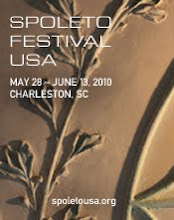
Robert Courtright has long been a kind of stealth artist not only in his home state of
Things have changed, or at least one hopes they have, with Robert Courtright: Collages, Collage Constructions and Masks 1953-2008" at the
Few familiar with Courtright’s art doubted his skills– they just hadn’t seen enough of his art to fully appreciate or judge it. The
The bulk of the 90 works are grid-like collages; rectangles of color lined up and stacked usually in the form of a rectangle.
But he got there by looking at another kind of building blocks. During the 1950s, Courtright was spending most of his time in  per with prints and sometimes a little paint. (Left, "Antibes," from 1953) With age, the artworks are now, like the buildings that inspired them, looking a bit weathered (which is wonderful as long as they’re well taken care of by conservators from now on.)
per with prints and sometimes a little paint. (Left, "Antibes," from 1953) With age, the artworks are now, like the buildings that inspired them, looking a bit weathered (which is wonderful as long as they’re well taken care of by conservators from now on.)
These recognizable images gave way in the 1960s to more abstract work, which has been the core of his art ever since. Since the 1990s, Courtright has also been making mask-like sculptures made of paper, bronze or ceramic.
During the late ‘60s and early ‘70s, Courtright did a body of relief sculptures covered with collage materials that feel closely connected to the of art of Lee Bontecou and have become some of his most recognizable images – although few people have seen many of them because many were lost when the artists shipped them to the other side of t he world and couldn’t afford to have them shipped back. Looking at the handful on display it’s easy to see why everyone was and is so taken with these delicate but powerful images.
he world and couldn’t afford to have them shipped back. Looking at the handful on display it’s easy to see why everyone was and is so taken with these delicate but powerful images.
The dominant form in all his collages is deceptively simple: grids of colored paper. These have been what he’s done with variations for most of the past 30 years. Each nearly identically sized piece of paper is floats slightly between above the support rather than overlapping as in traditional collage. Although these pieces are monochromatic, each piece of paper has color and texture variations.
As with the early building collages, some of these are made of recycled paper, the text of images bleached out, but at times giving glimpses of their previous incarnations. Some newer works involve heavier, high-grade paper that has been painted, sanded and painted again.
Collage is often thought of as a small, intimate art form. Courtright’s small pieces, especially those which incorporate beautiful quite hues, makes one again think, “Yes, collages are best when small.”
Then one turns around and sees something like his 1983 “Blue Tondo,” a round piece about five-feet across and that theory goes right out the window.
In between and belong the small regular rectangles within rectangle and the large round things are more found works, long and narrow pieces (4-inches wide and 4-feet tall), works split in two (one side blue, the other gray in a work from 1998), a triptych in splattered browns and blacks; back with red burning around the edges; white with lots of surface action, mostly shown in shadows. A few have text on them usually disembodied letters or portions of letters like some kind of arcane crossword puzzle (these are part of a series he did using text from James Joyce’s writings.)Some pieces are massive and architonic, like granite blocks, other wisps delicate as butterfly wings.
The most admirable thing about Courtright’s art and the show is how much they accomplish within what appears to be such strict limitations. Curator Paul Matheny knows just what to put in and leave out – working as he often does with the sensitivity of an artist. He’s a particularly good match for this art and this artist.
The show has a couple of shortcomings. The masks are not the most interesting of his works and the show has too many and it skips much of the later ‘60s when he was doing sand installations; at least one should have been in this exhibition.
The museum just published a fine catalog of the show, but it’s too bad the exhibition isn’t traveling, not just throughout the state, but throughout the Southeast and maybe beyond. The very good news for Courtright, and those who love his work, is that his first solo show at the Zoubok Gallery opened last month. http://www.pavelzoubok.com/
a fine catalog of the show, but it’s too bad the exhibition isn’t traveling, not just throughout the state, but throughout the Southeast and maybe beyond. The very good news for Courtright, and those who love his work, is that his first solo show at the Zoubok Gallery opened last month. http://www.pavelzoubok.com/
The













No comments:
Post a Comment
Post comments under the anonymous listing if you do not subscribe to one of the services listed.